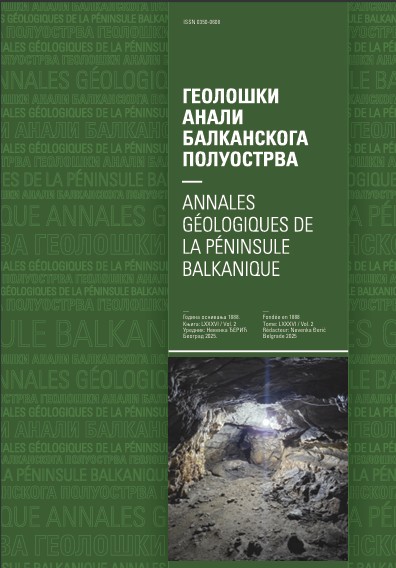A review of Pb-Sb(As)-S, Cu(Ag)-Fe(Zn)-Sb(As)-S, Ag(Pb)-Bi(Sb)-S and Pb-Bi-S(Te) sulfosalt systems from the Boranja orefield, West Serbia
Abstract
Recent mineralogical, chemical, physical, and crystallographic investigations of the Boranja orefield showed very complex mineral associations and assemblages where sulfosalts have significant role. The sulfosalts of the Boranja orefield can be divided in four main groups: (i) Pb-Sb(As)-S system with ±Fe and ±Cu; (ii) Cu(Ag)-Fe(Zn)-Sb(As)-S system; (iii) Ag(Pb)-Bi(Sb)-S; (iv) and Pb-Bi-S(Te) system. Spatially, these sulfosalts are widely spread, however, they are the most abundant in the following polymetallic deposits and ore zones: Cu(Bi)-FeS Kram-Mlakva; Pb(Ag)-Zn-FeS2 Veliki Majdan (Kolarica-Centralni revir-Kojići); Sb-Zn-Pb-As Rujevac; and Pb-Zn-FeS2-BaSO4 Bobija. The multi stage formation of minerals, from skarnhydrothermal to complex hydrothermal with various stages and sub-stages has been determined. All hydrothermal stages and sub-stages of various polymetallic deposits and ore zones within the Boranja orefield are followed by a variety of sulfosalts.
Copyright (c) 2022 Geološki anali Balkanskoga poluostrva

This work is licensed under a Creative Commons Attribution 4.0 International License.










